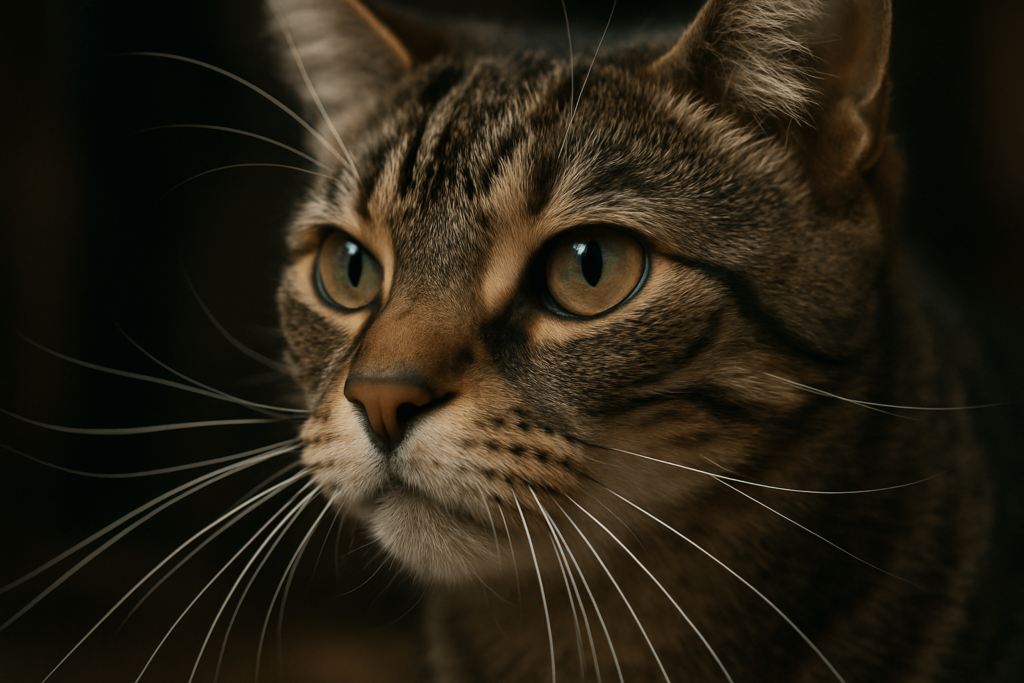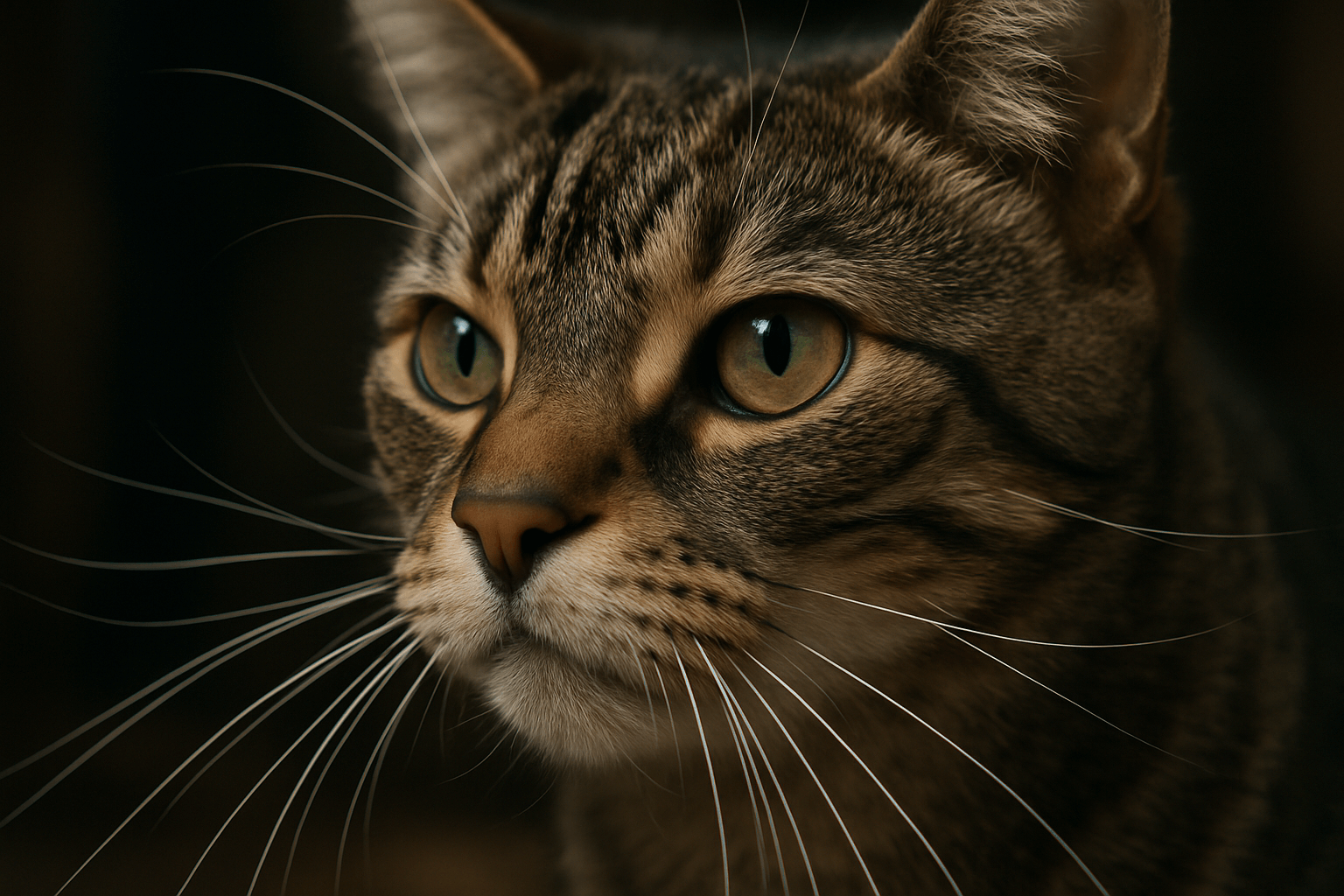Are Cat Whiskers Sensitive? Understanding Their Role and Importance
Cat whiskers are far more than just adorable facial features—they are highly specialized sensory tools that play a crucial role in your feline friend’s daily life. These delicate hairs, also known as vibrissae, act as an extension of a cat’s senses, helping them navigate their environment with precision. But how sensitive are cat whiskers, and why are they so important? In this blog post, we’ll explore the fascinating world of cat whiskers, their functions, and how to care for them properly. Whether you’re a seasoned cat owner or new to feline care, understanding whiskers will deepen your appreciation for these remarkable creatures.
Why Are Cat Whiskers So Sensitive?
Cat whiskers are incredibly sensitive due to their unique structure and connection to the nervous system. They serve as a vital tool for cats to interact with their surroundings, making them far more than just decorative fur.
Rooted Deep in the Skin:
Whiskers are embedded three times deeper into the skin than regular fur, connecting directly to nerves and blood vessels.Highly Responsive to Touch:
Even the slightest pressure on a whisker can trigger nerve signals, allowing cats to detect changes in their environment instantly.Linked to the Brain:
Each whisker is connected to the somatosensory cortex of the brain, which processes tactile information, making whiskers essential for spatial awareness.Used for Measuring Spaces:
Cats use their whiskers to determine whether they can fit through tight spaces, ensuring they don’t get stuck while exploring.Sensitive to Air Currents:
Whiskers can detect subtle changes in air movement, helping cats sense nearby objects or potential dangers without seeing them.
The sensitivity of cat whiskers highlights their importance in a cat’s ability to navigate and survive in various environments.

How Do Cats Use Their Whiskers Daily?
Cats rely on their whiskers for a wide range of activities, from hunting to communication. Understanding these uses sheds light on why whiskers are so critical to their well-being.
Hunting and Stalking Prey:
Whiskers help cats judge distances and movements, enabling them to pounce with accuracy even in low-light conditions.Navigating in the Dark:
Cats use their whiskers to “see” in complete darkness by detecting obstacles and changes in their surroundings.Expressing Emotions:
The position of a cat’s whiskers can indicate their mood—forward-facing whiskers suggest curiosity, while flattened whiskers signal fear or aggression.Balancing on Narrow Surfaces:
Whiskers assist cats in maintaining balance by providing feedback about their body position relative to their environment.Protecting Their Face:
Whiskers act as sensors to prevent cats from bumping into objects or injuring their eyes while moving quickly.
These everyday uses demonstrate how whiskers are indispensable tools for a cat’s survival and comfort.
Check this guide 👉Crimped Cat Whiskers: Best 7 Expert Tips!
Check this guide 👉Cat Whiskers Position Meaning: Best 7 Expert Tips!
Check this guide 👉Are You Supposed to Trim Cat Whiskers? Best 7 Tips!
Functions of Cat Whiskers | Signs of Whisker Stress or Damage |
|---|---|
Help measure tight spaces | Excessive grooming around the face |
Detect changes in air currents | Broken or missing whiskers |
Aid in hunting and stalking prey | Signs of disorientation or clumsiness |
Assist with navigation in the dark | Reluctance to explore new environments |
Communicate emotions and moods | Increased anxiety or irritability |
Signs Your Cat’s Whiskers May Be Overstimulated
While whiskers are naturally sensitive, overstimulation can occur if they are touched or disturbed too much. Recognizing the signs of whisker stress helps ensure your cat remains comfortable and happy.
Avoiding Food Bowls:
Cats may refuse to eat if their whiskers touch the sides of narrow or deep bowls, causing discomfort.Excessive Grooming:
Over-grooming around the face or whisker area could indicate irritation or stress.Reluctance to Explore:
A cat avoiding new spaces or acting unusually cautious might be experiencing whisker fatigue.Aggressive Behavior:
Some cats may react defensively if their whiskers are touched repeatedly or handled roughly.Frequent Head Shaking:
This behavior could signal discomfort or sensitivity around the whisker area.
Addressing these signs early ensures your cat’s whiskers remain healthy and functional.
Tips for Protecting Your Cat’s Whiskers
Taking steps to protect your cat’s whiskers is an important part of responsible pet care. Here are some practical tips to keep their whiskers in top condition.
Choose Wide, Shallow Food Bowls:
Opt for bowls that allow your cat to eat without their whiskers touching the sides, reducing the risk of whisker fatigue.Handle Whiskers Gently:
Avoid touching or playing with your cat’s whiskers, as they are extremely sensitive and can cause discomfort.Provide Safe Exploration Spaces:
Ensure your home has plenty of open areas for your cat to move freely without bumping into objects.Monitor for Damage:
Regularly check your cat’s whiskers for signs of breakage or excessive shedding, which could indicate underlying health issues.Respect Their Boundaries:
If your cat shows signs of discomfort when their face is touched, respect their boundaries to avoid unnecessary stress.
By following these tips, you can help maintain your cat’s whisker health and overall well-being.
Common Myths About Cat Whiskers
Misunderstandings about cat whiskers abound, leading to confusion among pet owners. Clearing up these myths helps ensure proper care for your feline friend.
Myth: Whiskers Can Be Trimmed Without Harm:
Trimming whiskers disrupts a cat’s spatial awareness and can leave them feeling disoriented.Myth: Whiskers Are Just Long Hairs:
Unlike regular fur, whiskers are deeply rooted in nerve endings and serve specific sensory functions.Myth: All Cats Have Identical Whisker Patterns:
Whisker placement and length vary by breed and individual cat, contributing to their unique personalities.Myth: Whiskers Don’t Regrow if Damaged:
Whiskers naturally regrow after shedding or damage, though the process may take several weeks.Myth: Whiskers Only Serve Practical Purposes:
Whiskers also communicate emotions, adding another layer to their importance.
Dispelling these myths fosters a deeper appreciation for the complexity of cat whiskers.
How Whiskers Help Cats Communicate
Whiskers aren’t just tools for navigation—they also play a role in how cats express themselves. Understanding this aspect of whisker function strengthens the bond between humans and their pets.
Forward-Facing Whiskers Indicate Curiosity:
When a cat’s whiskers point forward, it means they’re interested in something or ready to investigate.Flattened Whiskers Signal Fear or Aggression:
Cats flatten their whiskers against their face when feeling threatened or preparing to defend themselves.Neutral Whiskers Reflect Relaxation:
Whiskers resting in a natural position show that a cat feels calm and at ease.Whisker Movement During Play:
Active whisker movement during play indicates excitement and engagement.Whiskers as Social Cues:
Observing whisker positions helps cat owners better interpret their pet’s mood and intentions.
Whiskers provide valuable insights into a cat’s emotional state, enhancing communication between cats and humans.
Fun Facts About Cat Whiskers
Cat whiskers are full of surprises, offering fascinating glimpses into the world of feline biology. Here are some intriguing facts about these incredible sensory tools.
Whiskers Are Symmetrical:
Most cats have exactly 12 whiskers on each side of their face, arranged in four rows for optimal functionality.Whiskers Aren’t Limited to the Face:
Cats also have whiskers above their eyes, on their chin, and even on the backs of their front legs.Whiskers Can Detect Texture:
Cats use their whiskers to sense the texture of surfaces, helping them decide whether to walk or leap.Whiskers Are Linked to Growth Phases:
Kittens are born with whiskers, which grow and develop alongside their bodies as they mature.Whiskers Reveal Health Status:
Changes in whisker condition, such as brittleness or excessive shedding, can signal underlying health problems.
These fun facts highlight the incredible versatility and importance of cat whiskers in their everyday lives.
Frequently Asked Questions About Cat Whiskers
Can I trim my cat’s whiskers?
No, trimming a cat’s whiskers can disorient them and impair their ability to navigate their environment.
What causes whisker fatigue?
Whisker fatigue occurs when a cat’s whiskers are repeatedly stimulated, often due to narrow food or water bowls.
Do whiskers grow back if they fall out?
Yes, whiskers naturally shed and regrow over time, similar to regular fur.
Why do cats have whiskers above their eyes?
These whiskers protect their eyes by triggering a blink reflex when something gets too close.
Can whiskers indicate a cat’s age?
While whisker length varies by breed, older cats may experience slower whisker regrowth compared to younger ones.
Appreciating the Sensitivity of Cat Whiskers
Cat whiskers are remarkable sensory tools that play a vital role in your feline companion’s daily life. From aiding navigation to expressing emotions, these delicate hairs are essential for their well-being. By understanding their sensitivity and taking steps to protect them, you can ensure your cat thrives in a safe and comfortable environment. Remember, whiskers are not just cute—they are a critical part of what makes cats such incredible and adaptable creatures. Treat them with care, and your cat will thank you with endless purrs and affection.
Canned Pumpkin for Cat Diarrhea: Best 7 Expert Tips! Natural remedy to firm stools, soothe upset bellies, and support gut health safely.
Can a Cat Give You Scabies? Best 7 Expert Tips! Discover the truth about feline mites, human skin risks, and how to protect yourself—without panic.
Cat Flea vs Human Flea: Best 7 Expert Tips! Discover the truth about bites, species, and how to eliminate infestations for good.
Weird Cat Behaviors: Best 7 Expert Tips! Discover why cats do strange things—and how to understand, not punish, their instincts for a happier home.





